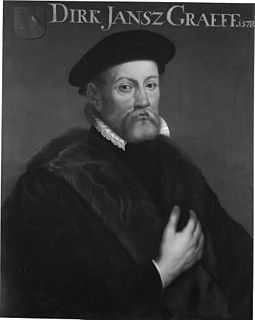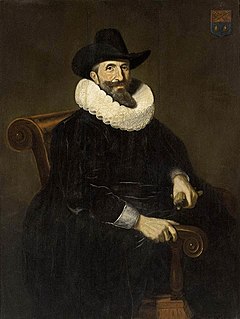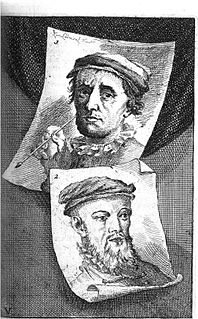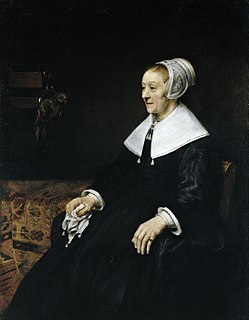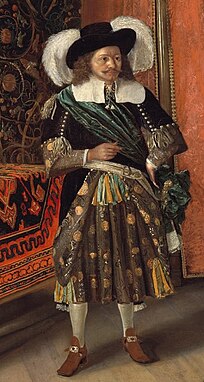| Dirck Pietersz van Nierop | |
|---|---|
| Born | 1540 Nieuwe Niedorp |
| Died | 1610 Amsterdam |
Dirck Pietersz van Nierop (1540 – 1610) was a Mennonite minister from North Holland who became notable for founding a branch of Mennonites in Amsterdam called the "Young Frisians" (Jonge Friezen).

North Holland is a province of the Netherlands located in the northwestern part of the country. It is situated on the North Sea, north of South Holland and Utrecht, and west of Friesland and Flevoland. In 2015, it had a population of 2,762,163 and a total area of 2,670 km2 (1,030 sq mi).
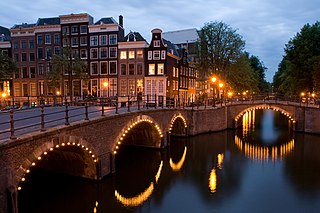
Amsterdam is the capital city and most populous municipality of the Netherlands. Its status as the capital is mandated by the Constitution of the Netherlands, although it is not the seat of the government, which is The Hague. Amsterdam has a population of 854,047 within the city proper, 1,357,675 in the urban area and 2,410,960 in the metropolitan area. The city is located in the province of North Holland in the west of the country but is not its capital, which is Haarlem. The Amsterdam metropolitan area comprises much of the northern part of the Randstad, one of the larger conurbations in Europe, which has a population of approximately 8.1 million.

Nierop was born in Nieuwe Niedorp. After becoming minister, he worked to keep the Dutch Mennonite community together as it was experiencing a culture clash between the Flemish Mennonites and Frisian Mennonites. At a meeting in Hoorn in 1589 where this came to a crisis, he represented the Frisians but was banned from his Mennonite community Doopsgezinde Gemeente der Friezen altogether for what the Mennonites of Hoorn saw as his overly strict practise of Frisian Mennonite beliefs. After being banned, he formed a splinter group called the Young Frisians. Soon after however, he seems to have changed his mind, as he then moved to Amsterdam where he joined the other opposing group called the Waterlanders under the guidance of Lubbert Gerritsz. [1] [2]

Nieuwe Niedorp is a village in the Dutch province of North Holland. It is a part of the municipality of Hollands Kroon, and lies about 9 kilometres (5.6 mi) northeast of Heerhugowaard.
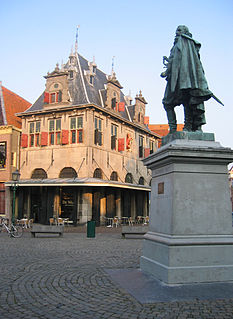
Hoorn[ˈɦoːr(ə)n](
Nierop took on the name Hoogsaet or Hooghsaet after moving to Amsterdam, where he later died in 1610, leaving a son Jan and daughters Trijn and Maritje. His son Jan Dircksz. Hoogsaet became a compass-maker and was presumably related to Dirck Rembrantsz van Nierop. Jan Dircksz was married 5 Febr. 1600 in Amsterdam and his father Dirck Pietersz was a witness living on the Haarlemmersluys. [3] In 1614 Jan was shunned from the Mennonites of Amsterdam for living in sin. In 1623 Jan's sister Trijn became a Diacones sister. [3] Jan's daughter Catrina Hoogsaet had her portrait painted by Rembrandt. Maritje had a son Jan who became a shipbuilder [4] [5] Another grandchild Claes Cornelis became the grandfather of the painter Jan Hoogsaat. [6]
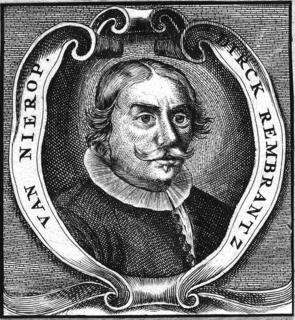
Dirck Rembrandtsz van Nierop was a seventeenth-century Dutch cartographer, mathematician, surveyor, astronomer, teacher and vermaner.

Rembrandt Harmenszoon van Rijn was a Dutch draughtsman, painter and printmaker. An innovative and prolific master in three media, he is generally considered one of the greatest visual artists in the history of art and the most important in Dutch art history. Unlike most Dutch masters of the 17th century, Rembrandt's works depict a wide range of style and subject matter, from portraits and self-portraits to landscapes, genre scenes, allegorical and historical scenes, biblical and mythological themes as well as animal studies. His contributions to art came in a period of great wealth and cultural achievement that historians call the Dutch Golden Age, when Dutch art, although in many ways antithetical to the Baroque style that dominated Europe, was extremely prolific and innovative, and gave rise to important new genres. Like many artists of the Dutch Golden Age, such as Jan Vermeer of Delft, Rembrandt was also an avid art collector and dealer.
Jan Hoogsaat was a Dutch Golden Age painter.


